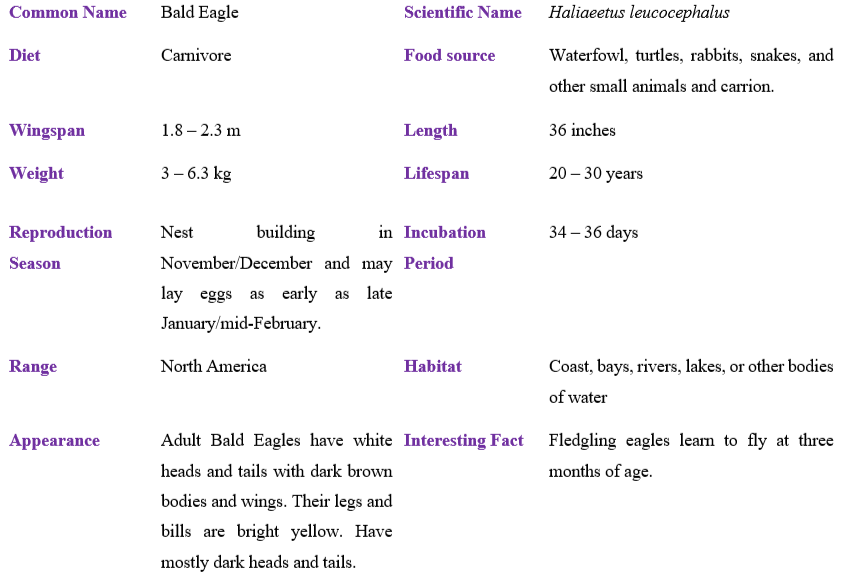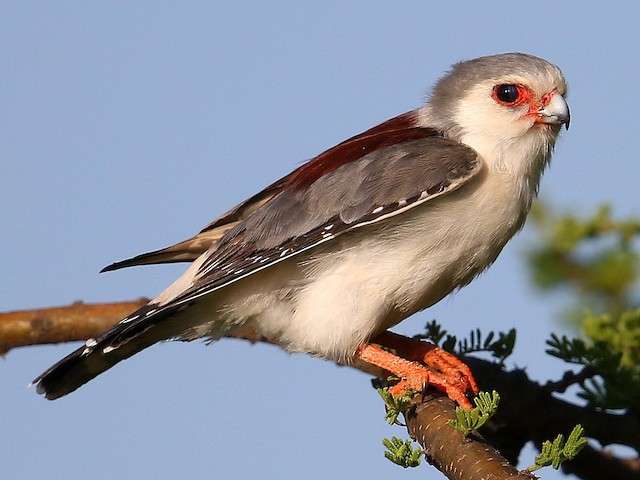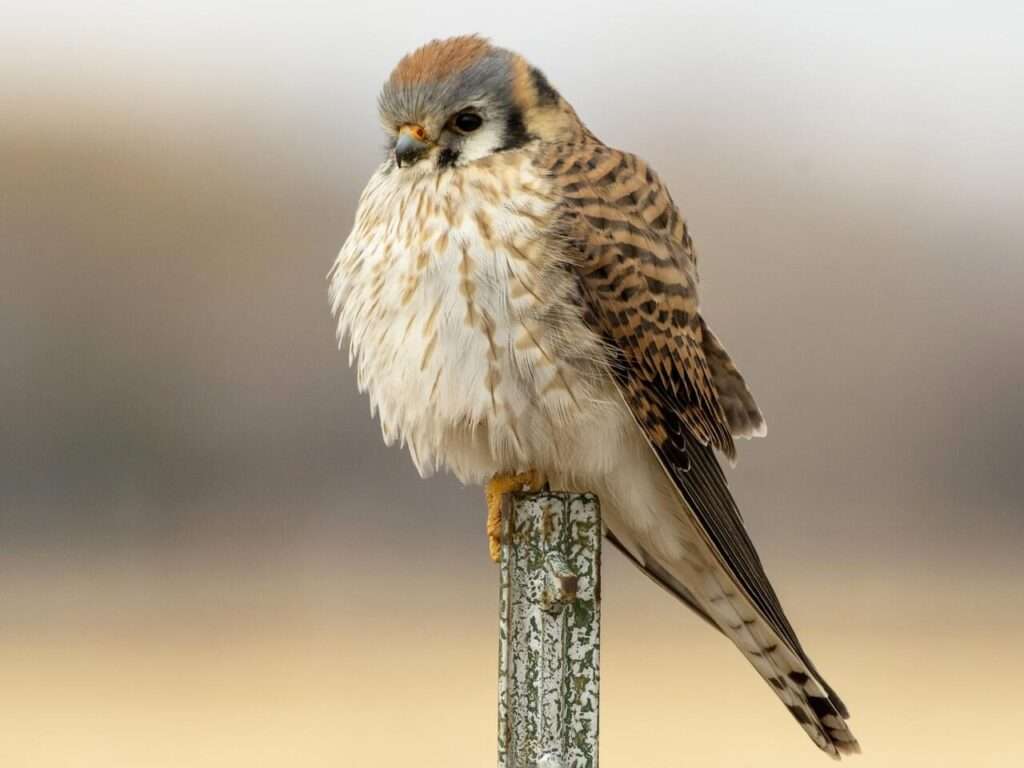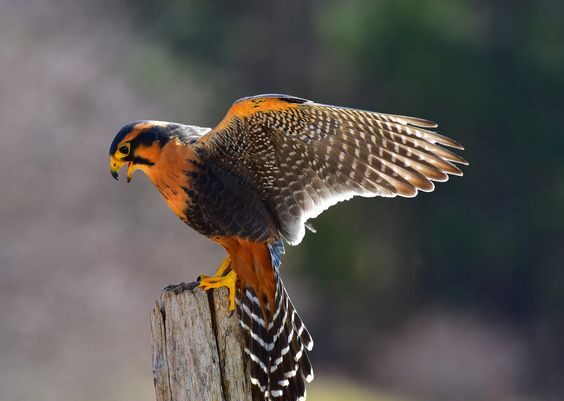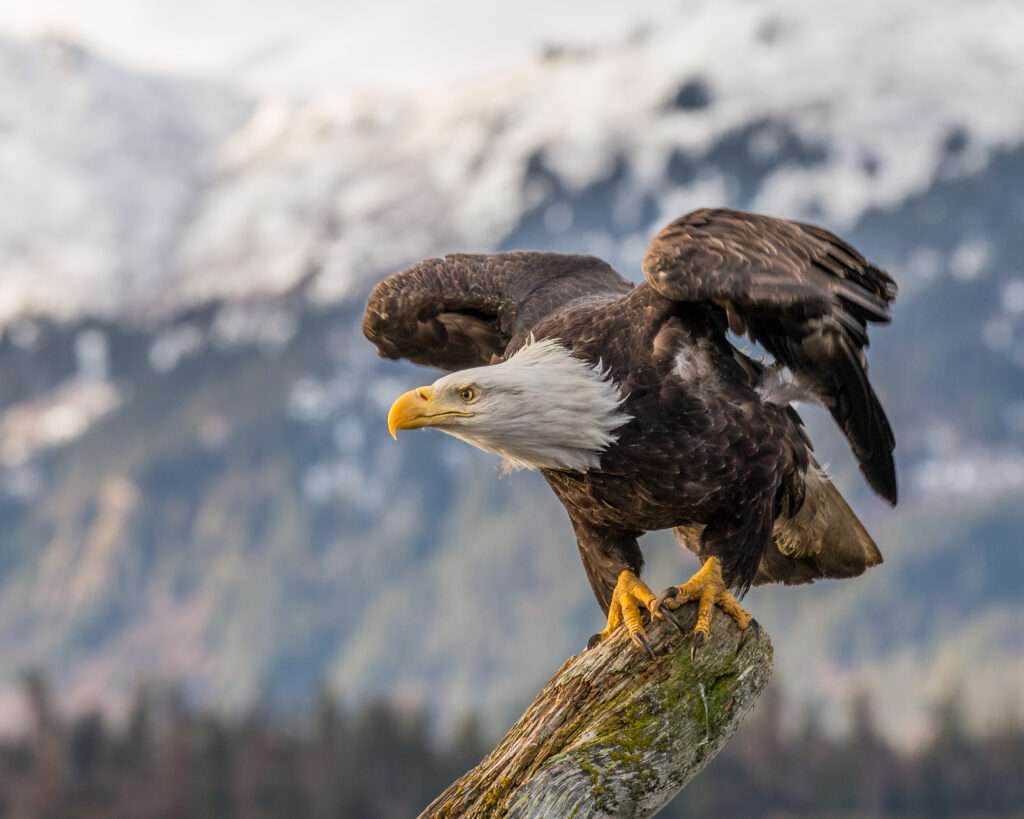
Description
Life span: 20- 30 years
The head and tail of an adult bald eagle are white, and the rest of the body is consistently dark brown. A medium-length, slightly wedge-shaped tail is present. Although the hue of the males’ and females’ plumage is the same, this species demonstrates sexual dimorphism because females are 25% larger than men. Bright yellow coloration can be seen on the feet, beak, and irises. The toes are small and powerful with big talons, and the legs are without feathers. The highly developed talon on the hind toe is utilized to penetrate the prey’s vital organs while the front toes hold the prey still. The beak of a yellow cere is broad and hooked.
The adult bald eagle can easily be distinguished in its natural habitat. The African fish eagle (Haliaeetus vocifer), which is similar but distinct from the bald eagle in having a white chest and a black tip to the bill, has a brown body (albeit with a somewhat more rufous color), a white head, and a tail
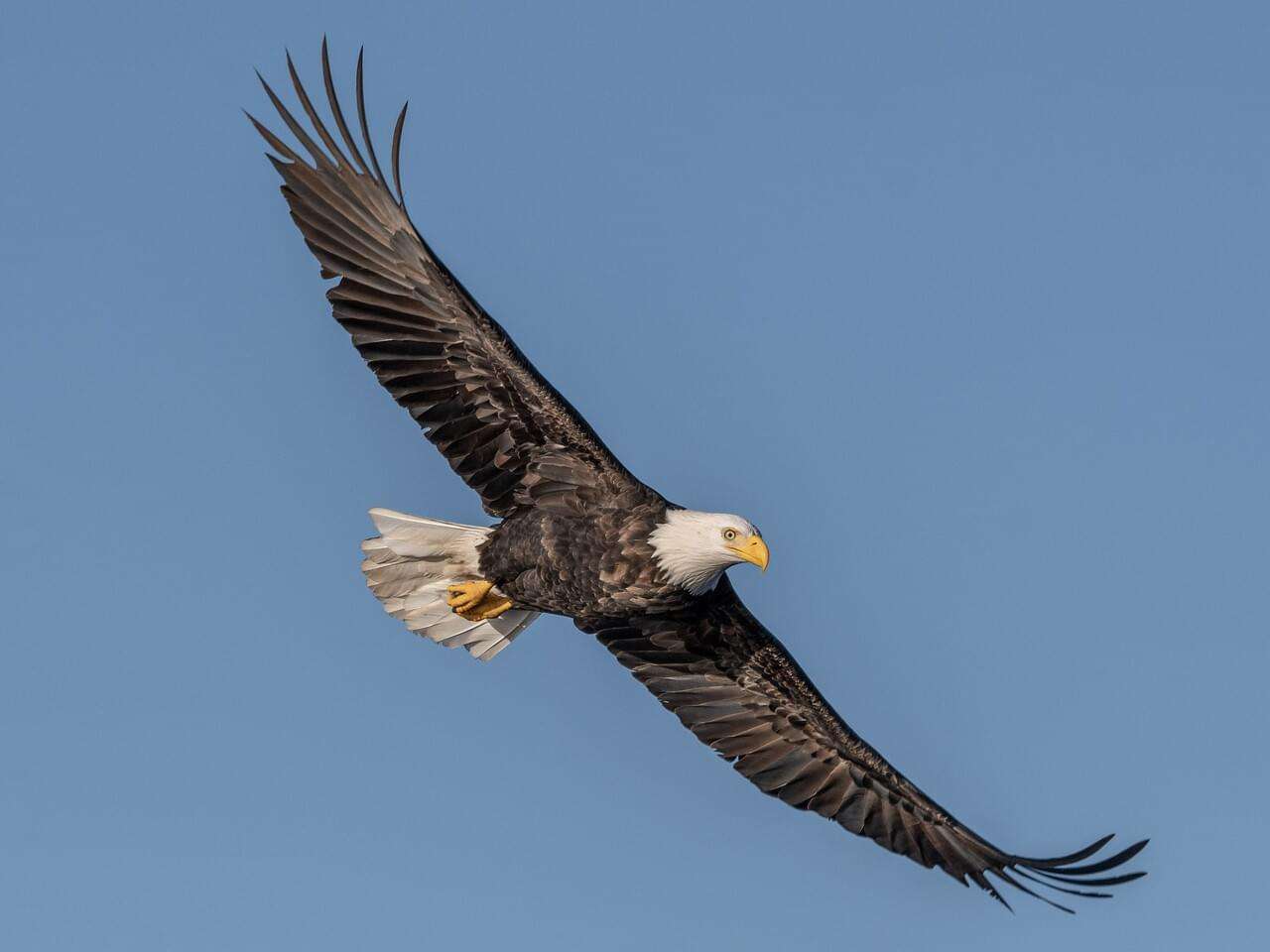
Native Region/Habitat
Bald eagles often nest near big bodies of water in forested settings, avoiding more populated areas wherever feasible. Bald Eagles can congregate close to garbage dumps, fish processing facilities, and below dams where fish congregate when they are feeding. For perching, bald eagles like towering, mature coniferous or deciduous trees with a broad perspective of the landscape. In dry, wide uplands with access to open water for fishing, bald eagles can also be observed in the winter.
Behavior
Bald eagles can soar, glide, and flail over great distances, making them exceptional flyers. One of the many beautiful courtship displays involves a male and female flying high into the air, locking talons, then cartwheeling downward together before breaking apart just before they hit the ground. In order to steal their food, bald eagles frequently harass other eagles and birds like ospreys. They also occasionally disturb mammals like river or sea otters. Bald eagles have an unnatural, rocking gait as they walk on the ground. A Bald Eagle has the ability to float and can “row” across water that is too deep for wading by using its wings. Even though they are frequently solitary, Bald Eagles gather in large numbers in shared roosts and feeding grounds, especially in the winter.
With birds pushing for position and battling over prey, these flocks may get raucous. People may witness Bald Eagles protecting their territories against invaders like raptors and ravens, coyotes, and foxes during the breeding season. When consuming carcasses, Bald Eagles may push Black and Turkey Vultures aside. Ravens, coyotes, bobcats, and dogs can all engage in competitive behavior. Blackbirds, crows, and flycatchers are among the songbirds that commonly annoy or chase bald eagles.
As a pet/In captivity
Eagles are large, bulky birds that often become irate. If someone doesn’t know much about them, they are more likely to lose their cool. They can be taught to tolerate people, but for the most part they cannot be domesticated or tamed. To keep an eagle as a “pet,” one would need a valid and particular government permit. Dogs and cats are also in danger from bald eagles.
Table
